Lockdown longings can do funny things to a person, and while takeaways are available, not everyone has access to the food they crave. In addition, the food you make in your own kitchen is often healthier, and tastier, than the takeaway equivalent. With that in mind, we are bringing back Fakeaway Fridays, to offer some alternatives to popular takeaway favourites, during this latest lockdown.
So, before you reach for the Chinese takeaway menu this weekend, perhaps it’s worth thinking about making the dishes yourself, or with help from any bored and unoccupied children you may have access to.
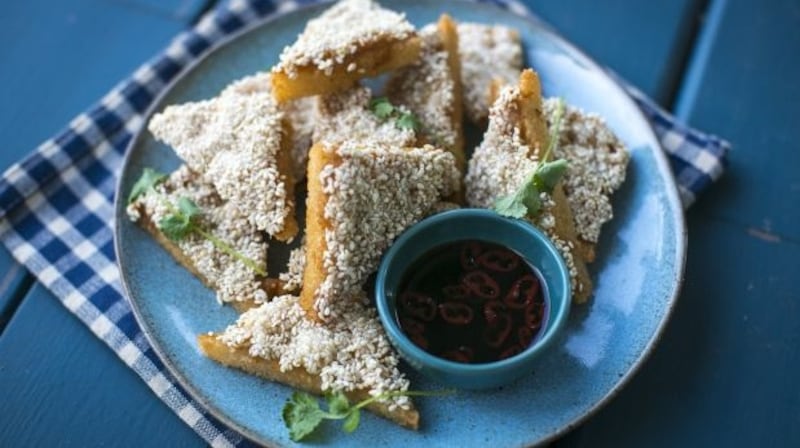
When Donal Skehan was the Irish Times Magazine recipe writer, he created a three-course Chinese New Year dinner featuring those perennial favourites – sesame prawn toasts and sweet and sour chicken, followed by deep-fried ice-cream balls with honey and sesame.
Chinese New Year is just a couple of weeks away, and recreating this menu would be a great way to welcome the year of the ox on February 12th.
"These crispy fried toasts should come with a warning – they are highly addictive. In the process of photographing this recipe I ate far more than I'd care to mention," Skehan writes. You can find the recipe here.
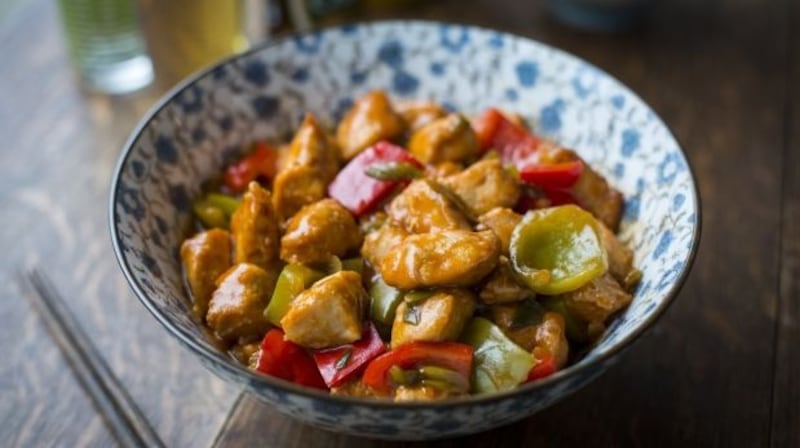

Who doesn't like a good tangy sweet and sour? Skehan's recipe calls for the chicken to be coated in batter and fried before being added to the sauce, so it should be reminscent of your favourite takeaway version, or hopefully even better than it.
There's a little bit of work involved in reproducing the deep fried ice-cream balls with honey and toasted sesame seeds, but it's a job that is perfectly suited to small hands – and it might even count towards home schooling goals. The scoops of ice-cream are coated in moistened Madeira cake and then rolled in a biscuit crumb coating before being deep-fried.
Perhaps you’ve been drooling over photographs of the new dumpling kits available from Kwanghi Chan’s Bowls restaurant in Dublin city centre, but find yourself outside the 5km collection zone and Dublin city delivery area? The pork and prawn Sichuan style wontons are certainly delicious, but so too are Chan’s pork and spring onion potsticker dumplings; scroll down for the recipe.
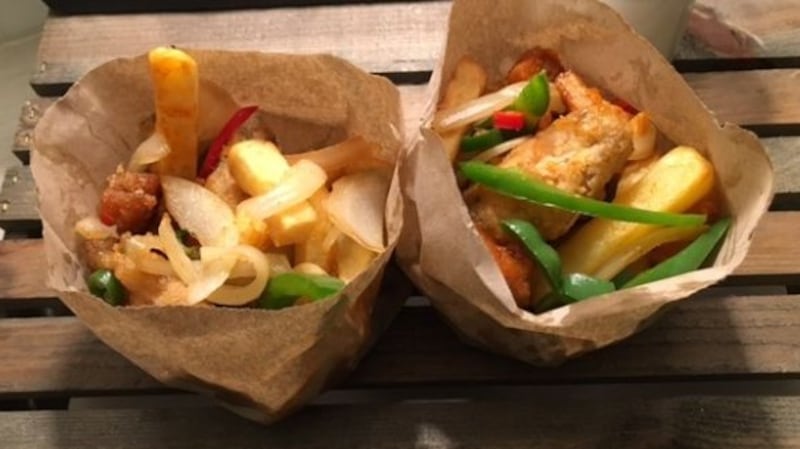
In 2017, Chan shared with us his recipe for Ireland's favourite Chinese takeaway, the spice bag. It's a bit of a labour of love, as it involves making your own char sui pork, coating and frying chicken wings, making chips from scratch and mixing your own special seasoning.
Nowadays you could just use one of Chan's two varieties of spice bag seasoning mix – a commercial roll-out that followed on from the success of this recipe, and part of his Chan Chan range of condiments and spice mixes. They're available from Asia Market's Dublin shops and online shopping site, asiamarket.ie, which delivers nationwide.
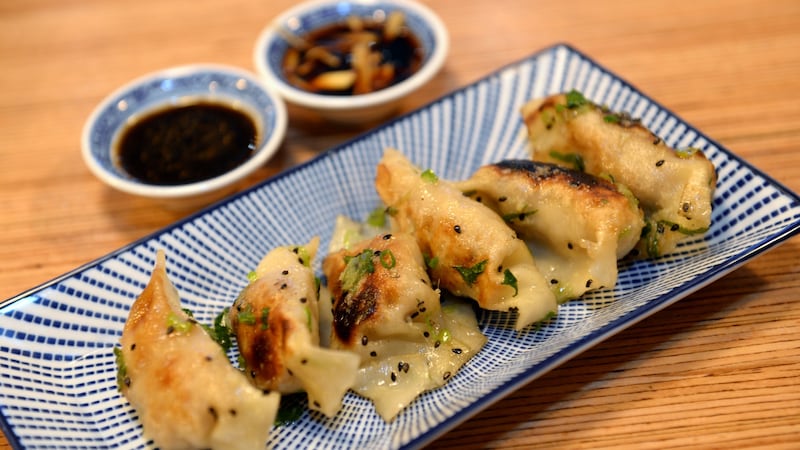
Kwanghi Chan’s pork and spring onion potsticker dumplings
Makes 30
Ingredients
160g minced pork (not too lean, some fat is good, about 70/30 ratio)
1 tbsp fresh ginger, minced (from a half inch knob)
2 scallions, thinly sliced
2 cloves garlic, finely minced (about 2 teaspoons)
1 tbsp soy sauce
2 tsp toasted sesame oil
Three-quarters of a tsp sea salt
One-eighth of a tsp freshly ground black pepper
30 dumpling or gyoza wrappers
60ml vegetable oil
Soy dipping sauce:
80ml soy sauce
1 scallion, green part only, very thinly sliced
2 tbsp rice vinegar
2 tsp toasted sesame oil
1 tsp minced garlic
1 tsp minced ginger
Method
1. Put the minced pork, ginger, scallions and garlic in a bowl and stir to combine. Whisk together soy sauce and sesame oil, then stir into the pork mixture. Stir in the pepper and salt.
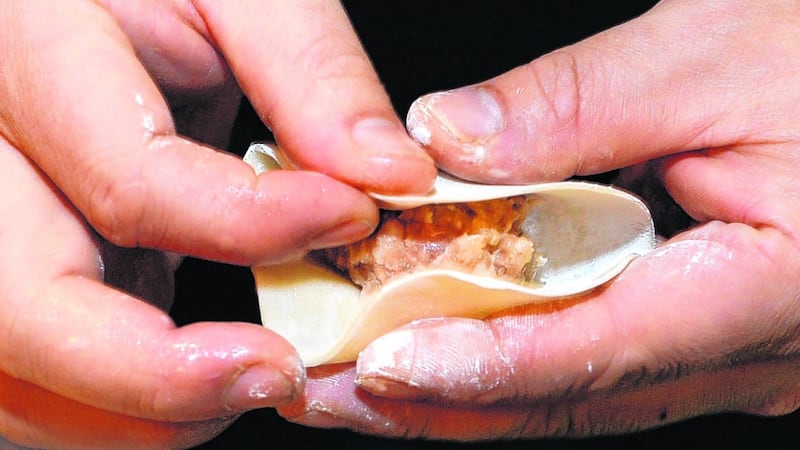
2. On dry surface, lay out one gyoza or dumpling wrapper, keeping the remaining wrappers covered with a dampened cloth or paper towel. Spoon one teaspoon of filling into the centre, then moisten halfway around the edge with a wet finger. Fold the dry half of the wrapper over the wet half to form a half-moon shape.
3. To seal, using thumb and forefinger of one hand, form tiny pleats along the dry edge of the wrapper, pressing the pleats against the moistened border to enclose the filling. The dumpling will curve in a semi-circle. Or, you can start in the middle, pleat out to one edge then turn the dumpling over and pleat in the opposite direction. Stand the dumpling, seam-side up, on a baking sheet and gently press to flatten the bottom. Cover loosely with dampened cloth or paper towel. Form the remaining dumplings in same way. If you cannot perfect the pleating method, just pinch the edges together to create a seal.
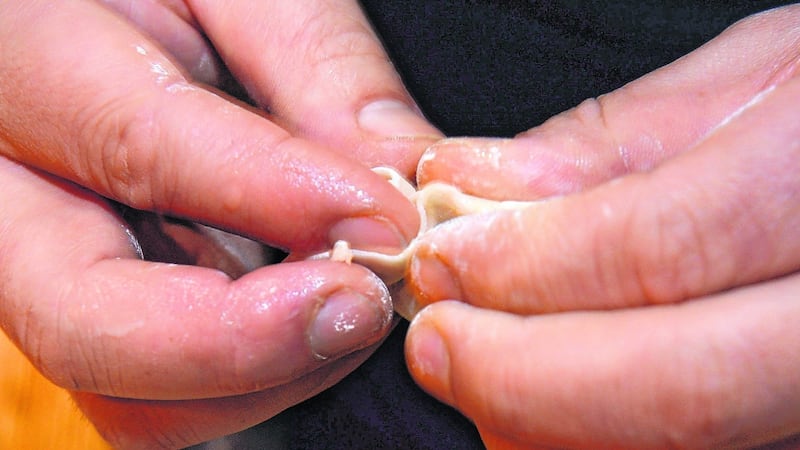

4. Heat the oil in a large, non-stick skillet or frying pan over a moderately high heat, until it is hot, but not smoking. Remove it from heat and arrange the pot stickers in a tight circular pattern standing up in the oil (they should touch one another). Cook, uncovered, until the bottoms are pale golden, two to three minutes. Add an espresso coffee cup amount of water, then cover the pan tightly with a lid and cook until the liquid has evaporated and the bottoms of dumplings are crisp and golden, three to five minutes. Add two more tablespoons of water if the pan looks dry before the bottoms are browned. Remove the lid and shake the pan to loosen the pot stickers, until the steam dissipates.
5. For the dipping sauce, stir all of the ingredients together in a small bowl to blend. Serve the dumplings immediately with the dipping sauce on the side.











